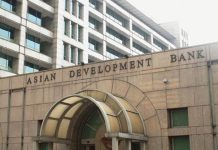ISLAMABAD: The Nandna Fort in Jhelum district of the Punjab province needs to be preserved and promoted to the outside world to increase the tourist inflow.
“The promotion of the fort will popularise the archaeological heritage of the country at international level,” said Muhammad Iqbal Khan Manj, Deputy Director Archaeology (North), Lahore.
He further said that the fort is located at a height of about 15,000 feet on the eastern borders of the Salt Range. “As it is located atop a hill, Nandna Fort used to be a military fortress to serve strategic purposes, especially to stop invasions from different directions. The Hindu Shahi constructed the fort in the 8th century at a high place on the pattern of Buddhists. Anand Pal, the son of Jay Pal, laid its foundations and constructed the temple of lord Shiva.”
Iqbal Manj pointed out that Nandna or the Nandna Fort was named after a Sanskrit word, “Nandana Vana”, which means the mythological garden of the god Indra (the lord of Heavens according to Hindu Mythology), as it was surrounded by beautiful lush green mountains. It was a royal passage in ancient times to connect central Asia with the region and was the busiest trade route. The passage was equally important for military troops and invaders. Alexander the Great also trotted this way in 326BC to match Porus. He defeated Porus and this was the first battle of Jhelum.”
He went on to explain that in the early 11th century, Sultan Mahmood of Ghazni reached up to Lahore and defeated the Hindu Shahi dynasty. “He constructed a mosque here too. Mahmood was fond of scientists and men of letters. So, during his journey to defeat the Hindu Shahi, a famous Iranian scholar, Abu Rayhan Muhammad Ibn Ahmad al-Biruni, accompanied him. He was a polymath and considered as the first anthropologist. He chose this place to establish an observatory and camped here for about six months. During his stay here, with the help of an astrolabe only, he calculated the radius and circumference of the earth.”
Iqbal Manj maintained that the place was the true blend of religious archaeological tourism, a strategic settlement, and an ancient scientific exploration place in the form of an observatory.
Iqbal Manj said during an excavation two years ago, the remains of all the said establishments and a few terracotta pottery pieces were discovered. “More discoveries are expected with more excavations at this place,” he said, adding that a paved way had been constructed to reach the fort.
Concluding the discussion, he said that the landmarks of Pakistan were rich in culture and history, and there was a dire need to promote them globally for attracting tourists.






